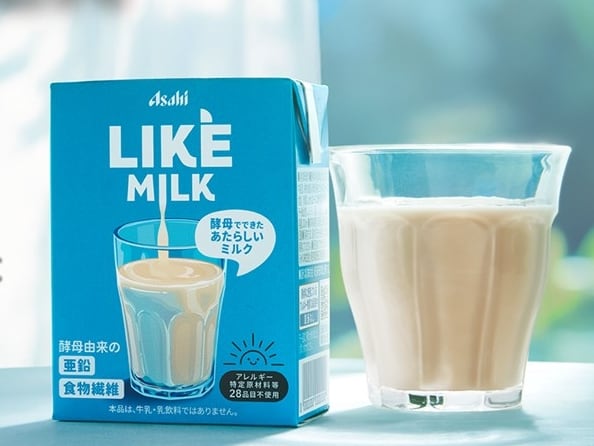Key takeaways
- Plant-based dairy sales in the US have declined in 2024, with a 2.8% decrease in dollar sales and a 3.9% drop in unit sales, driven by a decrease in buyers.
- Despite this, plant-based creamers, particularly oat creamers, are experiencing growth in both dollar and unit sales.
- In Europe, markets like France, Germany, Italy, and Spain have seen growth due to affordability and premiumization in categories like cheese.
- Innovation in 2025 focuses on simple ingredients and organic options, with brands like Califia Farms Organic expanding their portfolios and gaining traction among consumers seeking less processed alternatives.
Plant-based dairy has seen better days. According to market intelligence agency Circana, dollar and unit sales in the US softened in 2024 with buyers declining 2.8% versus a year ago. In the year to date, plant-based dairy dollar (-2.8%) and unit (-3.9%) were down versus a year ago.
Over in Europe, some markets experienced growth while others contracted in 2023/24.
According to a Circana retail sales data analysis carried out by non-profit The Good Food Institute, volume growth in markets such as France, Germany, Italy and Spain was driven by affordability in 2023/24 – with cheaper, private-label products like alt milk and cream alternatives beating out their branded counterparts.
Premiumization also drove sales in categories such as cheese, where consumers were likely to pay more for value-aligned products that also met flavor expectations.
Ultimately, plant-based dairy’s growth hinges on matching traditional dairy in both taste and price while also overcoming negative consumer perceptions around plant-based dairy’s taste, ease of cooking, availability, and more.
“This suggests that to reach more people, the sector needs to overcome a lack of familiarity with plant-based foods (for example by providing easily prepared product formats and simple recipe suggestions), continue improving taste, and clearly communicate the health and nutritional benefits of plant-based foods,” said Helen Breewood, Senior Market and Consumer Insights Manager.
Europe's biggest market for plant-based dairy is...
Germany is the biggest plant-based market in Europe, with the highest per capita spend on plant-based foods out of the six countries analyzed by GFI (the others being Italy, Spain, France, the Netherlands, and the UK) in 2024, at €19.92 per person per year.
The Netherlands is the market with the second-highest spend per person on plant-based foods. But more recently, sales of plant-based dairy alternatives declined in both volume and value terms. The sales value of plant-based milk alternatives (-5.6%), cheese (-6.3%), yogurt (-2.9%) and cream (-3.9%) all fell in 2023/24, and unit sales were also down in the period except for yogurt (+7.6%), with milk (-6.1%) and cream (-10.1%) down considerably.
Back in the US, plant-based dairy “is not doing so well” either, as Circana’s Melissa Altobelli reiterated. “Buyers are declining, dollar sales are down, unit sales are down – we’re seeing the same thing here,” she said. “[The category] was growing in 2020 to 2022, but sales were flat in 2023 and have been suffering ever since.”
According to Circana, milk alternatives deliver the bulk of sales (60%) in the US, followed by cream & creamers (15.2%), yogurt (7.4%) and ice cream (5.0%) making these the top 4 categories in US plant-based dairy.
But pretty much across the board, total plant-based dairy dollar sales and units have been soft in the year to date.
Where plant-based dairy thrives
However, there are few notable growth pockets for brands to consider as they look into NPD opportunities.
One category that has seen consistent growth in recent years is creamers.
Plant-based cream and creamers are growing in both dollar (4.8% vs YA) and unit (6.4%) terms versus a year ago, Circana data shows. In fact, plant-based creamers have gained dollar share of the total Plant Based Dairy category year over year since 2021.
“It’s a newer category,” Circana’s Altobelli told us, adding that there’s increased demand for plant-based oat creamers in particular.
As for plant-based milk alternatives, coconut milk is driving growth from both a volume and dollar sales perspective; and oat milk is also driving some volume growth, she added.
“However, almond milk declines are leading to overall softness for the category.”
Is plant-based dairy UPF?
Most plant-based dairy alternatives fall into the category of ultra-processed foods (UPFs) according to the NOVA classification system.
For beverages such as milk alternatives, products with added sugar or salt but without declared stabilizers are considered ‘processed’ but those with cleaner ingredient lists that do not mention additives (e.g. simply read ‘almonds, water’) are classified as ‘unprocessed’.
Research led by Mark Messina of the Soy Nutrition Institute argued that the NOVA system ‘paints with too broad a brush’ to be a reliable source for food purchasing decisions, adding that milk alternatives in particular ‘do not lead to and are not associated with adverse health effects unlike other UPFs, including ultra‐processed animal foods’.
Other critical voices of the NOVA system include food scientist and researcher Kantha Shelke, PhD, who argues that most studies that link UPFs to negative health outcomes are observational.
How are plant-based dairy brands innovating in 2025?
The main areas of innovation so far in 2025 feature more simple ingredients - specifically, no gums or oils - and ‘organic’ call-outs, Altobelli said.
“We see brands in this space like Califia Farms Organic and Malk gaining distribution and starting to gain share in plant-based milk.
“Both brands expanded their portfolios in 2024 into adjacent categories like Coffee Creamer and Shelf Stable Milk.
“These brands appeal to a niche consumer base looking for less processed plant based milk option, but trial continues to grow, and repeat is robust.”



